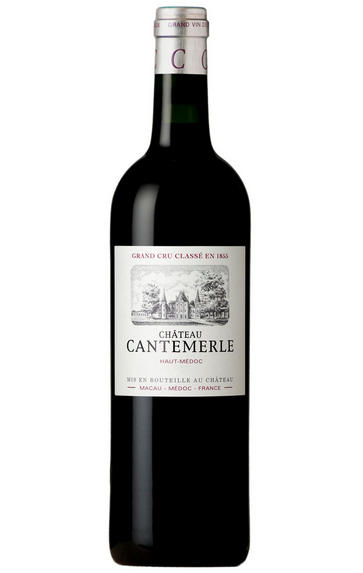
2010 Château Cantemerle, Haut-Médoc, Bordeaux
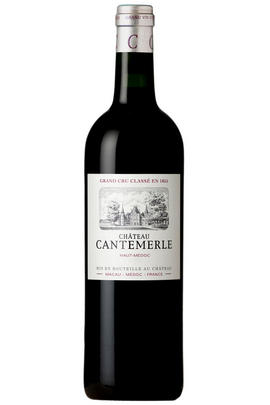
Critics reviews
The wine needs a good 7-10 years of cellaring and should keep for 30 more years, but this is the finest Cantemerle I have encountered in my professional career of tasting young vintages (dating back 34 years now).
Stunningly deep ruby/purple, with a beautiful nose of spring flowers intermixed with perfumed raspberry and blueberry notes, it exhibits a sort of cool-climate character. Broad, rich and intense on the palate, the wine has plenty of tannins, but they are sweet and well-integrated.
Everything is delicately entwined into this beautiful, medium to full-bodied, dense purple wine, which shows stunning character and a prodigious potential for development. This is definitely a major sleeper of the vintage and even better than I thought from the barrel.
Drink 2020 - 2050
Robert M. Parker, Jr., Wine Advocate (February 2013)
Tasted blind. Mid garnet. Lifted, slightly leafy nose. Cassis and pencils. Lively and fresh, with chalky but fine tannins. More energy than many 2010s. Juicy and fresh.
Drink 2020 - 2028
Julia Harding MW, jancisrobinson.com (April 2020)
About this WINE
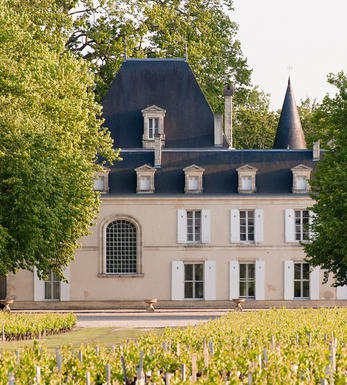
Chateau Cantemerle
Ch. Cantemerle's woodland setting is amongst the most beautiful of any château in the Médoc. It is located in the far south of the region, almost on the outskirts of the city of Bordeaux. It is the first major property on the Médoc Route des Châteaux, north of Bordeaux.
Cantemerle has 94 hectares of vineyards, planted with Cabernet Sauvignon (60%), Merlot (30%), Cabernet Franc (6%) and Petit Verdot (4%). The wines are made under the guidance of consultant oenologist, Eric Boissenot, undergoing 12 months' ageing in French oak, of which 40% is new.
Cantemerle is a Cinquième Cru Classé, with approximately 400,000 bottles produced each year and a further 160,000 bottles of the property’s second wine, Les Allées de Cantemerle.
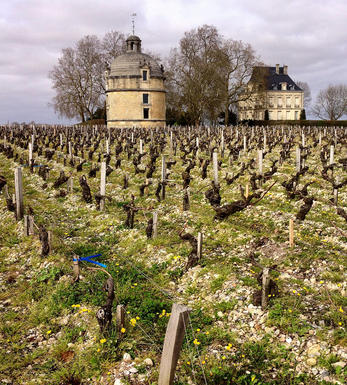
Haut-Medoc
Despite being as visually unprepossessing as the rest of the Médoc (despite its grandiose châteaux) this large red-wine appellation of Haut-Médoc is home to some of the world’s greatest wines. Its 4,500 hectares of vineyards form a largely continuous strip that follows the Gironde from St Seurin-de-Cadourne, just north of St Estèphe, to Blanquefort in the northern suburbs of Bordeaux.
All the great communes of the Left Bank fall within its boundaries: Margaux, St Julien, Pauillac and St Estèphe, as well as the up and coming Moulis and Listrac. These are labelled under their own, more illustrious and expensive appellation names. Châteaux labelled simply as Haut-Médoc rarely reach such heights, but nevertheless offer consistently good quality and offer some of the best value in Bordeaux.
Haut-Médoc wines tend to be firm and fine with generous fruit and a nice minerality – what many would consider ‘classic Claret’. They come from loftier vineyards and offer higher quality and more complexity than those labelled simply as ‘Médoc’. Almost all wines are a blend of the principal varieties – Cabernet Sauvignon, Merlot and Cabernet Franc – which helps producers hedge their bets if the slightly capricious climate causes one variety to fail. Small amounts of Petit Verdot, Malbec and even Carmenère are also used.
The higher proportion of sand and gravel to the south tends to produce finer wines, while the heavier clay and gravel north of Margaux yields sturdier examples. The best Haut-Médocs are found north of Ludon, a village just below Margaux. These include five classified Growths: Third Growth Ch. La Lagune, underperforming Fourth Growth Ch. la Tour Carnet and Fifth Growths Ch. Cantemerle, Ch. Camensac and Ch. Belgrave – as well as a number of fine Cru Bourgeois. Ageing ability varies but the lesser wines are usually delicious after three to four years, lasting around a decade, while the Cru Classés have a drinkability window of around six to 15 years.
Recommended Châteaux (labelled as Haut-Médoc): Ch. Beaumont, Ch. Belgrave, Ch. Cantemerle, Ch. Peyrabon
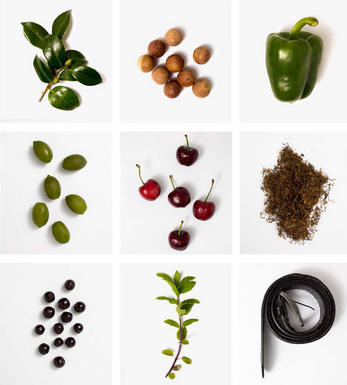
Cabernet Sauvignon Blend
Cabernet Sauvignon lends itself particularly well in blends with Merlot. This is actually the archetypal Bordeaux blend, though in different proportions in the sub-regions and sometimes topped up with Cabernet Franc, Malbec, and Petit Verdot.
In the Médoc and Graves the percentage of Cabernet Sauvignon in the blend can range from 95% (Mouton-Rothschild) to as low as 40%. It is particularly suited to the dry, warm, free- draining, gravel-rich soils and is responsible for the redolent cassis characteristics as well as the depth of colour, tannic structure and pronounced acidity of Médoc wines. However 100% Cabernet Sauvignon wines can be slightly hollow-tasting in the middle palate and Merlot with its generous, fleshy fruit flavours acts as a perfect foil by filling in this cavity.
In St-Emilion and Pomerol, the blends are Merlot dominated as Cabernet Sauvignon can struggle to ripen there - when it is included, it adds structure and body to the wine. Sassicaia is the most famous Bordeaux blend in Italy and has spawned many imitations, whereby the blend is now firmly established in the New World and particularly in California and Australia.


Buying options
Add to wishlist
Description
2010 was a superb vintage in Bordeaux that will go down in history for its excellent quality, so it’s worth searching out those great value gems that still exist from 2010. Chateau Cantemerle is a Bordeaux property capable of producing exceptional wines that compare with Ch. Batailley and Ch. Haut Bages Liberal in terms of the value it can offer.
Classic Claret, elegant and charming, medium-bodied with good ageing potential and best of all, well priced. Named as a 5ème Cru Classé in the 1855 classification and situated just outside the Margaux Appellation, it’s one of the first classed growths one encounters in the Medoc as one drives up from the city of Bordeaux.
Wine critics worldwide see Chateau Cantemerle as offering some of the best value in Bordeaux with its combination of good quality and modest pricing. It will never be an investment wine per se, but mainly from a good vintage such as 2010, one can have a case of wine that will cellar effortlessly and will always be a joy to drink.
This will fit perfectly into the Cellar of any connoisseur and, at this price, is an outstanding value; after five years or so of patience, you will have a great case of wine to drink over the next 15 years.
This is terrific! Always reliable, good value but perhaps too steady, their 2010 takes it up several notches and on to a whole new level. It is generous with ripe fruit and should offer terrific value for the best Cantemerle we can ever recall tasting.
Simon Staples, Berry Bros. & Rudd
wine at a glance
Delivery and quality guarantee